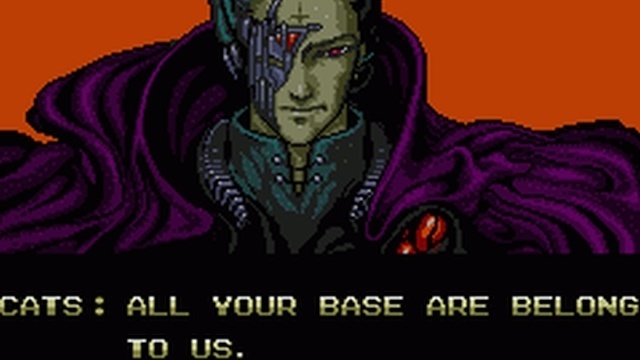Guilds, like anything else, go through a life cycle. Just like you, they’re born, they die, and they spend an entire semester of college utterly convinced that anyone is going to care about “All Your Base” in another decade.
Maybe not that last one, but you get the idea.
The part that’s important to take away from that, of course, is that there are different possible responses to problems based upon that life cycle. A guild that’s just forming is going to have different problems than one that’s rebuilding, and that in turn will be different than a guild that’s in decline. So let’s look at the life stages of guilds and discuss a bit more about what each stage means for the guild as a whole.

Newly formed
Not every guild starts small, but every guild’s start is small. Even if your guild starts with 40 members right away, your guild’s problems at this point aren’t about trying to maximize event participation and ensuring that everyone gets proper access to the guild hall. You’re worried about establishing the rules for the organization and, more importantly, providing a framework for what should be done in times of conflict.
About the worst thing that a guild can do here is try to move out of this stage too early. While you might have a variety of great ideas about how the guild is going to work, until you’ve actually tried those ideas out in a live-fire environment, they’re just ideas. Growing the group too quickly can lead to people flooding the group with very different ideas about what sort of group it’s meant to be – and more importantly, you won’t yet have the structures in place to actually declare what sort of group it is.
The best response to problems here is to talk things out, feel out possible solutions, and try on various metaphorical hats. Yes, you don’t have any hard-and-fast rules in place, but that can be a blessing rather than a curse. You can try out new ideas without worry over breaking long-established precedent. So try things out, experiment, and start growing when you feel that there’s a solid foundation in place.

Growing
Eventually, you need new members. In all likelihood, at least, you want new members, because just existing in the same self-fulfilling group eventually starts to get both incestuous and counter-productive. That’s when your guild is in the growth stage, with a set of rules and practices that have already been established.
The biggest problems here come with keeping everyone who has been with the group for a while happy, while at the same time keeping new members happy. This why some form of vetting process is ideal. New members need to be a good fit for the group that’s already there, and while you still have some freedom to experiment, you don’t want to shake up what works too much. The new people joining the guild want to be a part of something established, and you want to provide them that sense of establishment.
Stable
Stability, in a guild, does not mean “no one joins” or “no one leaves”. It means that the general sense of the guild, as a whole, is that it is neither growing nor declining. However, the rules, customs, and ideas of the guild are established and ironclad enough to be relied upon. Now is the point when questions of events, group participation, and the like become vital, because this is when you have a pretty core gathering of people in place.
Not every guild reaches this stage, and it’s the goal of every guild to stay here as long as possible. However, it’s important to ask if your guild is really here before treating it as such. A good rule of thumb is that if you’re no longer actively recruiting and would be perfectly happy with the guild remaining at its current size in perpetuity, you’re probably approaching or at a stable state. That doesn’t mean you aren’t going through issues, just that your group is fairly set and now it’s a matter of ironing out the issues that exist between members and policies.

Declining
Declining is not the same thing as dying. Declining just means that the guild is shrinking, and sometimes this is actually a natural and fine thing. You could be dealing with a game that’s reduced its team sizes or progression raid sizes, so your guild is shrinking along with it. The important aspect is that as a guild, people are leaving, and you’re left with the people who either don’t want to leave or can’t leave for whatever reason.
Here, your biggest problems will be the players who may very well want something more out of the group than you can offer, and the important decisions come down to whether you want to accept the smaller size and smaller goals or whether it’s something you wish to avoid. A period of decline can lead into more stability, and if the people who leave are giving clear and friendly reasons for their departures, odds are good that everyone is going according to plan. No hard feelings; it’s just time to move on.
Assuming that the decline is natural and not something worse, the best thing to do is assure everyone that it’s still business as normal, lest you find yourself hemorrhaging members faster than you plan. Losing certain groups or cliques need not be devastating, but if players perceive collapse, they’re more likely to join the departing out of a sense of panic.

Reforming
Generally, this accompanies a larger-than-expected decline or the unexpected departure of several existing members of leadership. If the head of the group and two of the three officers have to leave for personal reasons, odds are good that the result will be a pretty sharp decline for the group as a whole. The people who had some power are now left holding the bag and trying to pick up the pieces once more.
Reforming is equal parts growth and formation, adjusting the rules that previously existed based on the people who’ve stuck around while also trying to bring in new people. Done correctly, the guild can return to a stable state, with everyone on board for a slightly different approach compared to what had come before. Unfortunately, there’s a great deal of risk in trying to both grow and redefine at the same moment – as mentioned with forming the guild, trying to grow when everything is still up in the air does a disservice to everyone.
Caution, then, is the watchword. You don’t want to make severe changes, just gentle ones, giving weight to the people who are already in place. It may not please everyone, but done well, it can lead to something of a second (or third, or fourth, etc.) honeymoon.

Dying
Death is when a problem has become ingrained in the structure of the guild, and the leadership is either so fixated on maintaining stability that it refuses to address the problems or is resorting to drastic measures to change it. Or leadership is entirely absent. In short, there’s no recovery.
Death doesn’t always mean the guild is a day or a week or a month from breaking up, nor does it mean that guilds in this state can no longer get new recruits. Rather, it means that the guild’s relevance and status as a cohesive guild is slipping away rapidly. I’ve talked a great deal here about guilds that are dying and what can be done about it; suffice it to say that it’s going to take a reformation, at least, to save things. Often, leaving and forming a new group can be a more straightforward option.
As you can see, no state of a guild’s life cycle is devoid of problems.
But the nature of those problems change with time, so your approaches and ideas also need to shift. Done properly, that means that players and leaders are constantly adjusting and trying out new things, finding new ways to keep the group together and interesting. You don’t tell a new guild to have solid recruitment policies, and a reforming guild won’t need to focus as heavily on event structure.
Knowing the difference can often be what separates a guild that’s doing well and addressing problems from one that slips into that last deathly state.
And don’t you want that?
Enjoy the Guild Guide column? Keep up to date with our new Twitter account @GuildGuide!







Published: Oct 23, 2015 09:53 am